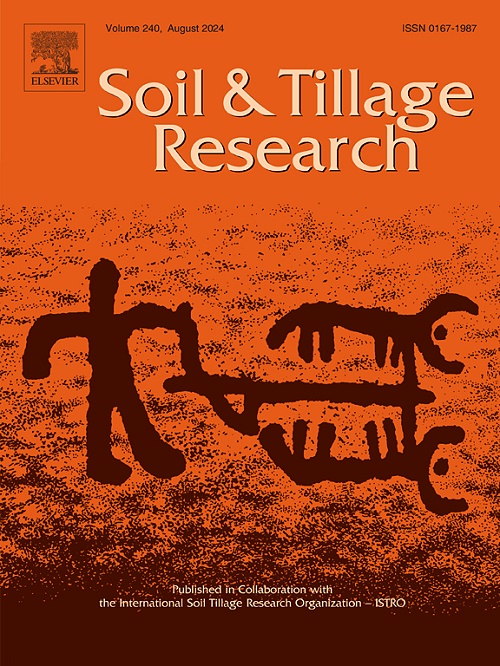Predicting bulk density of soils with varying degree of structural degradation using single and multi-parameter based pedotransfer functions
IF 6.1
1区 农林科学
Q1 SOIL SCIENCE
引用次数: 0
Abstract
Bulk density (BD) is a key soil property needed to for example calculate carbon stocks or predict soil hydraulic properties. However, measuring soil BD on a large scale is often labor-intensive, time-consuming and expensive. While pedotransfer functions (PTFs) have been developed to predict BD from readily-available or easy-to-determine soil properties, they are often inaccurate. One of the reasons might be that PTFs typically do not include a soil structure related predictor variable. The objective of this study was to explore whether adding an easy-to-determine variable that represents soil structure or soil strength does improve the prediction accuracy of PTFs. 252 horizons were sampled on 42 agricultural fields in Belgium that cover all major texture classes according to the Belgian texture triangle. At each field, two positions of contrasting field traffic and thus difference in soil structure and soil strength were sampled at three depths. Several quantitative soil physical properties were determined using laboratory and field-based methods, including soil organic carbon content (SOC), texture (sand, silt, and clay content), penetration resistance (PR) at field capacity and a soil structural quality score (Sq) taken from a semi-quantitative visual soil assessment (based on VESS). PTFs with both single and multiple parameters were developed using two classical regression methods (multiple linear regression MLR and generalized additive model GAM) and two machine learning methods (support vector machine SVM and k-nearest neighbours KNN). In addition to the above mentioned soil properties, soil layer (depth) was as well considered as predictor variable. The BD in the Train dataset ranged from 1.10 to 1.74 Mg m−3 with a mean value of 1.45 Mg m−3. Similarly, in the Test dataset, BD values ranged from 1.14 to 1.67 Mg m−3 with the same mean value of 1.45 Mg m−3. Overall, it was found that the KNN method generally showed a better predictive performance with the higher R2 and lower RMSE. Notably, while SVM also performed well, particularly on the Test dataset, its R2 values exceeded those of KNN in some cases. PR and Clay content were the two most important variables for predicting BD in all models, SOC the third most important, while also the VESS-based Sq score was found to be a good potential predictor for BD PTF models. Grouping the dataset based on soil structure (by using Sq) could substantially improve the predictive ability of most single parameter PTFs, in contrast with grouping based on texture that resulted in a slight improvement only. Grouping based on Sq or texture also demonstrated improvements in the performance of multi-parameter models. Among these, the KNN and SVM models showed relatively better overall performance. For example, the KNN model with f(SOC, Clay, PR) grouping by Sq achieved an overall R2 of 0.537 and RMSE of 0.057 Mg m−3 on the recombined complete dataset.
求助全文
约1分钟内获得全文
求助全文
来源期刊

Soil & Tillage Research
农林科学-土壤科学
CiteScore
13.00
自引率
6.20%
发文量
266
审稿时长
5 months
期刊介绍:
Soil & Tillage Research examines the physical, chemical and biological changes in the soil caused by tillage and field traffic. Manuscripts will be considered on aspects of soil science, physics, technology, mechanization and applied engineering for a sustainable balance among productivity, environmental quality and profitability. The following are examples of suitable topics within the scope of the journal of Soil and Tillage Research:
The agricultural and biosystems engineering associated with tillage (including no-tillage, reduced-tillage and direct drilling), irrigation and drainage, crops and crop rotations, fertilization, rehabilitation of mine spoils and processes used to modify soils. Soil change effects on establishment and yield of crops, growth of plants and roots, structure and erosion of soil, cycling of carbon and nutrients, greenhouse gas emissions, leaching, runoff and other processes that affect environmental quality. Characterization or modeling of tillage and field traffic responses, soil, climate, or topographic effects, soil deformation processes, tillage tools, traction devices, energy requirements, economics, surface and subsurface water quality effects, tillage effects on weed, pest and disease control, and their interactions.
 求助内容:
求助内容: 应助结果提醒方式:
应助结果提醒方式:


